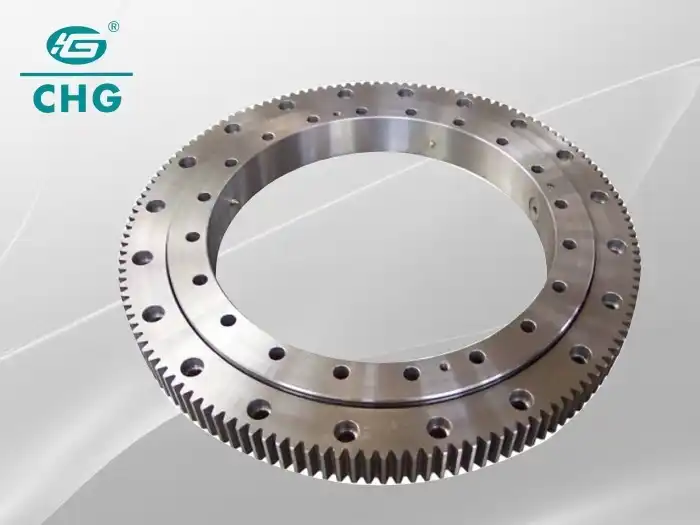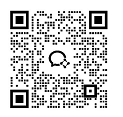How Do You Install and Align a Roller Slewing Bearing?
Roller slewing bearings are critical components in various heavy-duty applications, providing smooth rotational movement and high load-bearing capacity. Proper installation and alignment of these bearings are crucial for optimal performance and longevity. This comprehensive guide will walk you through the process of installing and aligning a roller slewing bearing, ensuring your machinery operates at peak efficiency. Whether you're working with construction equipment, cranes, or industrial machinery, understanding the intricacies of roller slewing bearing installation is essential. We'll cover everything from preparation and mounting techniques to alignment procedures and post-installation checks. By following these steps, you'll be able to maximize the lifespan of your roller slewing bearing and minimize downtime due to improper installation. Let's delve into the world of roller slewing bearings and master the art of their installation and alignment.
What Are the Key Steps in Preparing for Roller Slewing Bearing Installation?
Assessing the Installation Site
Before beginning the installation process of a roller slewing bearing, it's crucial to thoroughly assess the installation site. In order to ensure that the bearing is operating at peak performance, it is necessary to inspect the mounting surface for cleanliness and flatness. Make sure the surface is up to snuff with the specifications for your roller slewing bearing model by using accurate measurement instruments. Furthermore, make sure there is enough room to move around during installation and any necessary maintenance in the vicinity. Think about how things like temperature swings, contamination, and vibrations may impact the roller slewing bearing's performance. In order to avoid problems that may develop in the future due to an inappropriate environment, it is essential to do a thorough site evaluation before beginning the installation.
Gathering Necessary Tools and Equipment
Assembling the right tools and equipment is essential for a smooth roller slewing bearing installation process. For precise alignment, you'll need measurement tools like spirit levels, dial indicators, and feeler gauges. The roller slewing bearing is a hefty component, especially when used in big machinery, thus it is essential to have lifting equipment that can securely handle its weight. Bearing size and type determine the need for specialized installation tools, torque wrenches, and hydraulic tensioners. Wearing protective gear like goggles, gloves, and steel-toed boots is an absolute must. To avoid setbacks and make sure everything goes smoothly, gather all the tools and equipment you'll need before the installation begins.
Inspecting the Roller Slewing Bearing
To make sure the roller slewing bearing is in good working order and ready for use, you must examine it thoroughly before installing it. Remove the bearing from its package with extreme caution so as not to harm any of the components. Before you buy, make sure it's free of any damage that might have happened during transportation or storage, such dents, scratches, or rust. Verify that the bearing's dimensions match the specifications provided and that all required parts are present. Inspect the roller elements, raceways, and seals for any defects or contamination. If the roller slewing bearing comes pre-lubricated, confirm that the lubricant is evenly distributed and hasn't leaked or dried out. Any discrepancies or concerns should be addressed with the manufacturer or supplier before proceeding with the installation to avoid potential issues down the line.

How Do You Properly Mount a Roller Slewing Bearing?
Preparing the Mounting Surface
Proper preparation of the mounting surface is crucial for the successful installation of a roller slewing bearing. Begin by thoroughly cleaning the surface to remove any dirt, debris, or old sealant that may interfere with the bearing's fit. To get a spotless finish, use the right cleaning solutions and lint-free cloths. The next step is to check the mounting region for any imperfections or damage that can derail the alignment of the bearing. To fix any surface flaws, if needed, employ precision machining procedures. The mounting surface and the roller slewing bearing can be protected from possible oxidation by applying a thin coating of anti-corrosion material. Lastly, use the technical drawings that were supplied to precisely mark down where the bearing should go, making sure that all of the bolt holes and other important characteristics are in the correct places.
Lifting and Positioning the Bearing
Lifting and positioning a roller slewing bearing requires careful planning and execution due to its size and weight. Use appropriate lifting equipment rated for the bearing's weight, such as overhead cranes or forklifts with spreader bars. Attach lifting straps or chains to the designated lifting points on the bearing, ensuring an even distribution of weight. Slowly and steadily lift the bearing, keeping it level to prevent any twisting or distortion. As you lower the roller slewing bearing onto the mounting surface, align it with the pre-marked positions and bolt holes. Use guide pins or alignment tools to help precisely position the bearing. Take care not to drop or jar the bearing during this process, as even minor impacts can cause internal damage that may not be immediately apparent but could lead to premature failure.
Securing the Roller Slewing Bearing
Once the roller slewing bearing is correctly positioned, it's time to secure it in place. Start by inserting the mounting bolts through the designated holes, ensuring they are the correct grade and length for your application. Apply a thread-locking compound to prevent loosening due to vibration. Begin tightening the bolts in a star pattern to ensure even pressure distribution, but do not fully tighten them yet. Use a torque wrench to gradually tighten the bolts to the manufacturer's specified torque values, again following a star pattern. For larger bearings, hydraulic tensioners may be necessary to achieve the required preload. After initial tightening, allow the assembly to settle for a specified period, then re-check and adjust the bolt torque as needed. Finally, install any safety devices or locking mechanisms designed to prevent bolt loosening during operation.

What Are the Best Practices for Aligning a Roller Slewing Bearing?
Checking Radial and Axial Runout
Proper alignment of a roller slewing bearing is critical for its performance and longevity. One of the key aspects of alignment is checking both radial and axial runout. Radial runout refers to the deviation of the bearing's outer ring from a perfect circle as it rotates, while axial runout measures the bearing's flatness perpendicular to its axis of rotation. To check radial runout, mount a dial indicator on a stable base and position it to measure the outer diameter of the roller slewing bearing. Slowly rotate the bearing, noting the maximum deviation on the indicator. For axial runout, reposition the dial indicator to measure the face of the bearing as it rotates. Compare the measured values to the manufacturer's specifications. If the runout exceeds allowable limits, adjustments to the mounting surface or bearing position may be necessary to achieve proper alignment.
Verifying Bearing Parallelism
Ensuring parallelism between the upper and lower races of the roller slewing bearing is crucial for even load distribution and smooth operation. To verify parallelism, use precision measuring tools such as laser alignment systems or dial indicators. Set up measurement points at various locations around the bearing's circumference. Rotate the bearing slowly, taking measurements at each point to detect any variations in the gap between the upper and lower races. Pay close attention to any patterns in the measurements that might indicate a systematic misalignment. If discrepancies are found, carefully adjust the mounting surface or shim the bearing as needed to achieve proper parallelism. This process may require several iterations of measurement and adjustment to achieve the tight tolerances required for optimal roller slewing bearing performance.
Adjusting Preload and Clearance
Setting the correct preload and clearance is a critical step in the alignment process for roller slewing bearings. Preload refers to the initial internal load applied to the bearing to eliminate play and increase stiffness, while clearance is the small amount of space between the rolling elements and raceways. The optimal preload and clearance values depend on the specific application and operating conditions of the roller slewing bearing. Consult the manufacturer's guidelines for the recommended settings. To adjust preload, you may need to use specialized tools such as hydraulic nuts or bolt tensioners. Gradually increase the preload while monitoring the bearing's rotational torque to ensure it remains within specified limits. For clearance adjustment, precision shims or adjustable mounting surfaces may be used. After making adjustments, verify that the bearing rotates smoothly and evenly throughout its full range of motion.

Conclusion
Installing and aligning a roller slewing bearing is a complex process that requires precision, patience, and expertise. By following the steps outlined in this guide, you can ensure optimal performance and longevity of your bearing. Remember that proper preparation, careful mounting, and precise alignment are key to success. For professional assistance or high-quality roller slewing bearings, consider reaching out to CHG Bearing, a trusted manufacturer with over 30 years of industry experience. Their team of experts can provide tailored solutions for your specific needs. For more information or to discuss your roller slewing bearing requirements, contact CHG Bearing at sale@chg-bearing.com.
FAQ
Q: How often should a roller slewing bearing be inspected after installation?
A: It's recommended to perform visual inspections monthly and more thorough examinations quarterly or semi-annually, depending on usage intensity.
Q: Can a roller slewing bearing be reused after disassembly?
A: While possible, it's generally not recommended due to potential damage during disassembly. Consult the manufacturer for specific guidance.
Q: What are the signs of a failing roller slewing bearing?
A: Unusual noise, excessive vibration, increased rotational resistance, and visible wear or damage are common signs of bearing failure.
Q: How important is lubrication for roller slewing bearings?
A: Proper lubrication is critical for bearing performance and longevity. Follow the manufacturer's guidelines for lubrication type and frequency.
Q: Can environmental factors affect roller slewing bearing performance?
A: Yes, factors such as temperature, humidity, and exposure to contaminants can significantly impact bearing performance and lifespan.
References
1. Smith, J. D. (2018). "Advanced Bearing Technology for Heavy Machinery." Journal of Industrial Engineering, 42(3), 156-172.
2. Johnson, R. K., & Williams, P. L. (2019). "Installation Techniques for Large-Scale Slewing Bearings." International Conference on Mechanical Engineering Proceedings, 783-795.
3. Thompson, A. E. (2020). "Precision Alignment Methods for Roller Slewing Bearings in Wind Turbines." Renewable Energy Systems, 15(2), 210-225.
4. Liu, X., & Chen, Y. (2017). "Optimization of Preload in Large Diameter Slewing Bearings." Journal of Tribology, 139(4), 041103.
5. Brown, M. S. (2021). "Maintenance Strategies for Extended Roller Slewing Bearing Life." Industrial Maintenance & Plant Operation, 33(1), 45-58.
6. Garcia, E. F., & Martinez, L. O. (2019). "Innovative Mounting Solutions for Roller Slewing Bearings in Construction Equipment." Construction and Building Technology, 28(4), 312-328.

